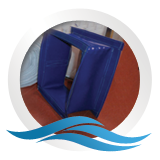Automation plays a key role, ensuring governance without slowing processes or burdening teams. Planning in DevSecOps involves defining security requirements from the outset. Teams outline potential threats and compliance targets, integrating security into project goals. By establishing a security plan early, organizations Software quality assurance can minimize risks and ensure security needs align with development objectives.
Resources
While there are multiple ways to do DevOps, there are also plenty of ways to not do it. Teams and DevOps leaders should be wary of anti-patterns, which are marked by silos, lack of communication, and a misprioritization of tools over communication. In our DevOps Trends survey, we found that more than two-thirds of surveyed organizations have a team or individual that carries the title “DevOps” in some capacity. Effective monitoring identifies anomalous behaviors indicative of security risks, presenting opportunities for preemptive interventions. Regular updates to monitoring systems adapt defenses to new vulnerabilities, maintaining protection standards. EY refers to the global organization, and may refer to one or more, of the member firms of Ernst & Young Global Limited, each of which is a separate legal entity.
Step 2: Define the team’s scope and responsibilities
This approach ensures that software remains secure and functional, adapting to new security insights. Security-focused testing identifies and mitigates potential threats in real-time, facilitating agile responses. Regularly updated testing procedures adapt to emerging vulnerabilities, maintaining security throughout the application lifecycle. Just because the organizational model is being moved toward DevSecOps, it doesn’t mean that leading practice approaches to change management can be ignored. Moving to DevSecOps doesn’t happen overnight — organizations need a structured and long-term plan to transform and sustain the Middle/Senior DevOps Engineer job changes.
Standard DevSecOps Platform Framework
GitOps leverages Git as a central repository for managing infrastructure and application settings, enhancing version control and auditability. This practice ensures that system states reflect Git repository contents, supporting secure configuration management and rapid deployment rollbacks in case of issues. Shifting security left involves incorporating security measures early in the development process rather than at its conclusion. This proactive approach emphasizes identifying and mitigating vulnerabilities during initial stages, saving time, reducing costs, and preventing defects from progressing through the lifecycle.
Static Code Analysis
- To move toward a SecOps team structure, IT should bring security colleagues into new projects and listen to their advice.
- By moving security checks earlier, teams address vulnerabilities swiftly, decreasing the need for extensive rework post-production.
- Security as code promotes embedding security checks directly within the codebase, allowing automation of security policies and compliance checks.
- Choose a secret management tool or a vault that helps you maintain tight access control and provides comprehensive audit logs.
- Since SAST doesn’t require your application to be running, it’s a highly effective method of identifying security vulnerabilities in just about every stage of the development pipeline.
- It’s easy to create a team with all the needed skills by hiring many people, but the team won’t have resilience as each member handles a small, isolated area.
As DevOps is started up as a pilot program, a DevOps team forms to learn the new tools and technologies and then begin implementation. Then they become their own silo, making sure the uneducated masses don’t spoil their new utopia. This one may seem pretty obvious as an anti-pattern, but many organizations that try to adopt DevOps try to do so without breaking down the barriers between the groups.
- This is just one extra silo, and has all the same drawbacks with the addition of alienating other teams to the idea of DevOps.
- Successfully navigating cultural resistance positions organizations to implement DevSecOps effectively.
- It identifies a range of security issues against industry test cases for your application to detect open source code issues.
- Creating a single source of truth will ensure the greatest accuracy of information for everyone.
- In the 1980’s, Jack Welsh, at the time the CEO of General Electric, introduced the idea of the “boundaryless organization” in a process that became known as GE Work-out.
- Conversely, security professionals need to offer constructive suggestions, not gotcha criticisms.
- Understandably, it takes time, resources, and a strategy to bring this cultural shift.
After identifying and fixing systemic value-damaging behaviors, collaboration becomes possible. This team structure, popularized by Google, is where a development team hands off a product to the Site Reliability Engineering (SRE) team, who actually runs the software. In this model, development teams provide logs and other artifacts to the SRE team to prove their software meets a sufficient standard for support from the SRE team. Development and SRE teams collaborate on operational criteria and SRE teams are empowered to ask developers to improve their code before production. Incorporating security into development teams requires expanding their expertise, posing a significant challenge.
- By automating infrastructure tasks, IaC reduces errors and enhances security, enabling rapid deployment of reliable environments.
- In the context of SAST and DAST, container scanning is a continuous security testing method spanning across the SDLC.
- Treat IT systems, applications and cybersecurity as part of a single interconnected system.
- This includes participating in industry events, researching new tools and techniques, and promoting continuous education.
- Making sure the team members have common goals is critical to shared success, and therefore breaking down organizational silos is critical to DevOps success.
- It describes the requirements that need to be met by any specific implementation before it can be considered a Standard GSA DevSecOps Platform.
DevSecOps blends automated tools and processes to maintain security checks as unintrusive elements of development, ultimately delivering secure software releases more reliably than traditional methods. Most organizations understand the need to transform their organizational structure and ways of working to succeed under an agile organizational model. However, many focus on one or two of these dimensions but fail to fully plan for the transformational journey and don’t provide the right support to their teams and staff during the transition. Winning organizations are applying these three dimensions to their organizational structure so they can respond more quickly and efficiently to market dynamics. In this section, I’ll help you understand the types of tools you’ll need to successfully integrate security into your DevSecOps pipeline.
Stream-aligned teams work on a single valuable stream of work, usually aligned to a business domain. They might focus on a specific feature or group of features, work only on one user journey, or align with a particular persona. Bookmark these resources to learn about types of DevOps teams, or for ongoing updates about DevOps at Atlassian. Enabled by data and technology, our services and solutions provide trust through assurance and help clients transform, grow and operate. Whichever organization model you choose, remember the idea of DevOps is to break down silos, not create new ones.


